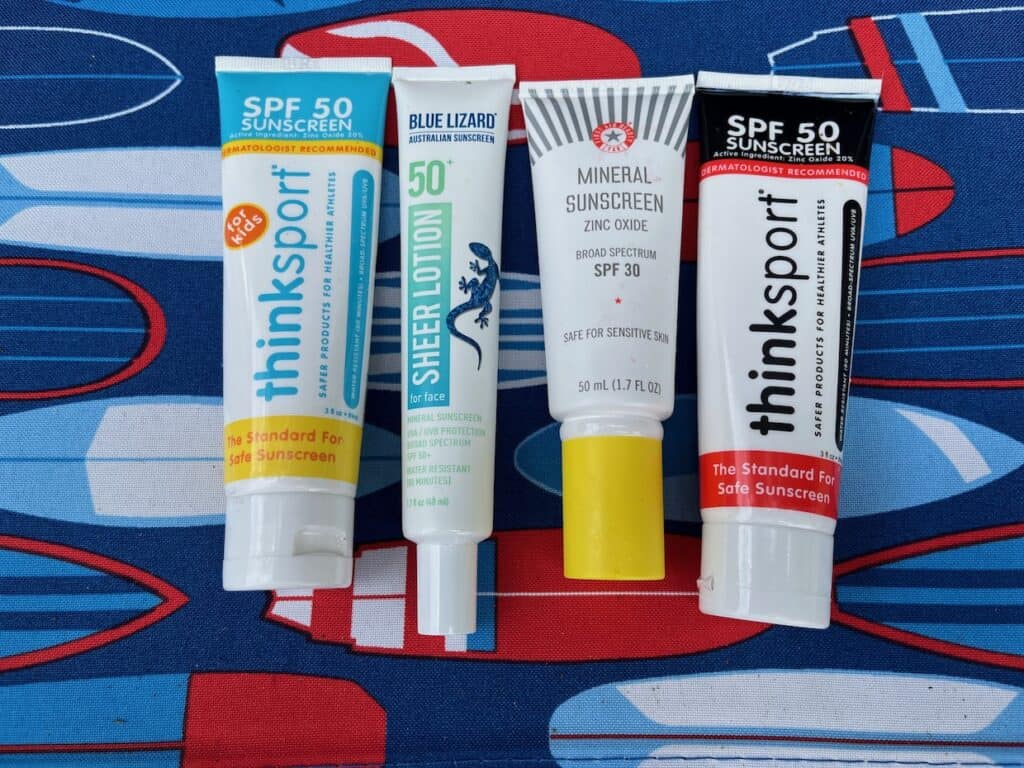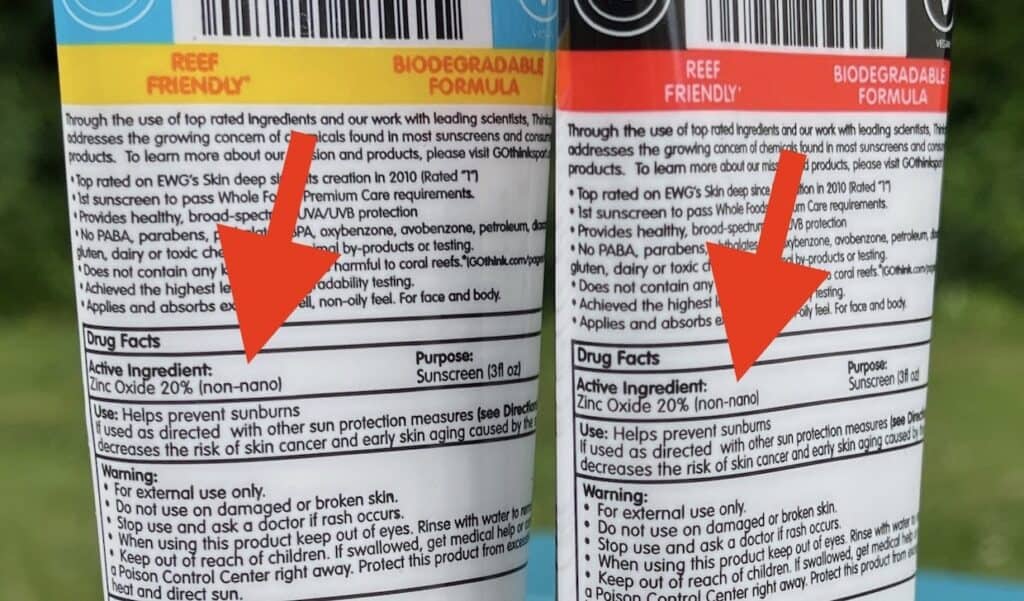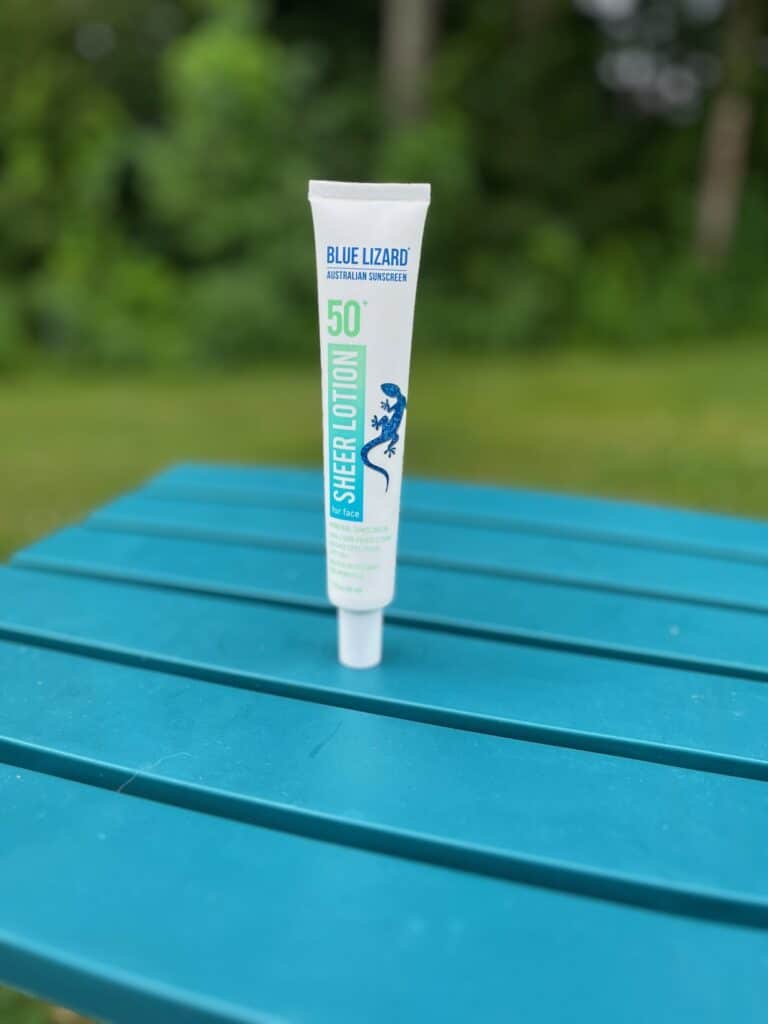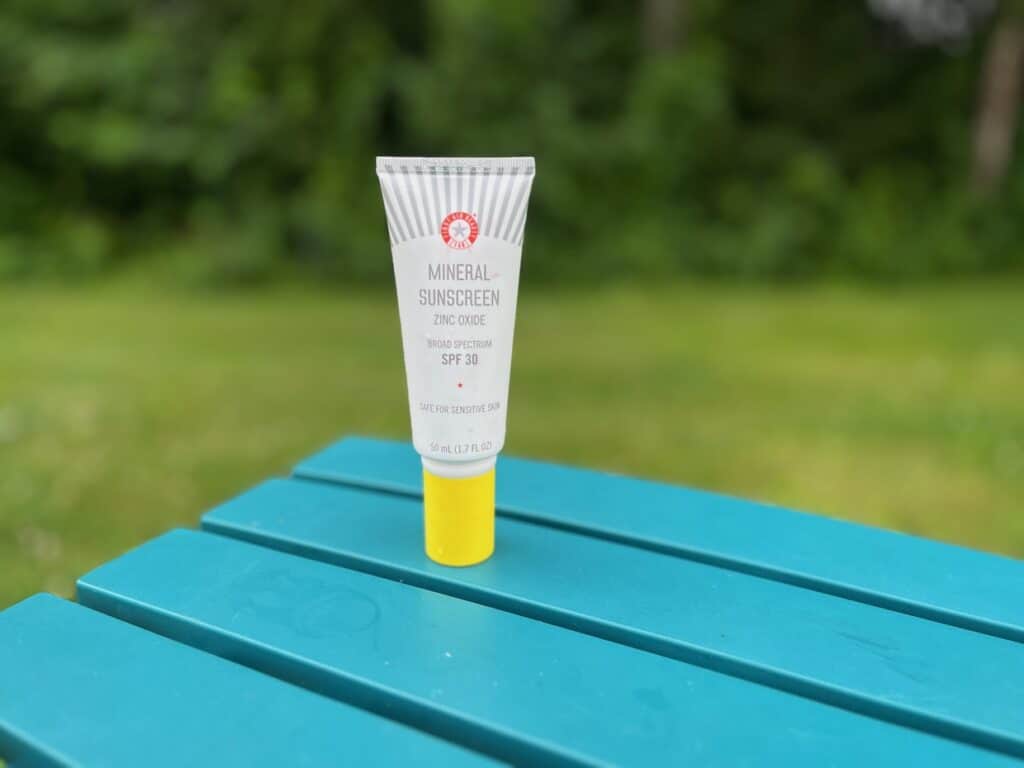I’d never heard of reef-safe sunscreen until I booked a trip with friends to Turks and Caicos. One of the women on this girls’ vacation was a scuba diver and she implored us only to use mineral sunscreen, not chemical sunblock. She explained that sunblock containing certain chemicals can harm coral reefs and other undersea life. I had no idea.

This post may contain affiliate link(s). As an Amazon Associate, I earn from qualifying purchases. See Disclosures.
What is reef-safe sunscreen?
When you’re applying sunscreen to your skin, you’re expecting the ingredients in that sunblock to protect your skin from the sun. What you may not realize is that the ingredients in most sun-protection brands create a so-called chemical barrier to work. And they do work — for us. However, they can harm aquatic life.
On the other hand, sunscreen brands labeled as reef safe don’t rely on chemicals to block out the sun. Instead, they focus on mineral-based ingredients, like some of these cruelty-free makeup brands do. Mineral-based sunscreen creates a physical barrier, if you will, on your skin to protect it from the sun without any of those harmful chemicals.
Think about the white stripe you might see on a lifeguard’s nose. That’s zinc oxide, a mineral-based sunscreen. According to Michigan State University, it’s an excellent physical sunscreen and one you should look for when buying sunblock.
Back to chemicals in sunscreen: one of those chemicals, called oxybenzone, is toxic to coral and sea anemones, the journal Science reported. The more I thought about it, the more I realized that if chemical sunscreens can do that to aquatic life, what could it be doing to my own body?
Turns out that I’ve been avoiding many brands of chemical sunscreens for years. Why? Because I have sensitive skin. And those chemicals always caused a burning or stinging sensation on my skin.
In fact, for years I’ve leaned towards using children’s sunscreen brands. These tend to be gentler on the skin and are less likely to have harmful chemicals in them because, you know, kids.
Destinations that have sun protection product rules
In some locations it’s actually against the law to sell sun protection products that can harm marine life. That’s not to say that visitors will get a fine for bringing it with them, but stores can’t sell these products. So if you forget your sunblock, you’ll only be able to buy certain brands of mineral sunscreen.
Currently, here are locations that ask visitors to bring reef-safe sunscreen and ban the sale of it:
- Aruba
- Bonaire
- Cozumel, Mexico
- Hawaii
- Key West, Florida
- Palau
- U.S. Virgin Islands
Therefore, if swimming, snorkeling or other water sports are on your list of things to do in Aruba or these other locations, make sure you put a reef-safe sunscreen brand on your vacation packing list.
Chemicals to avoid in your sunscreen
Below is a list of specific chemicals you do not want in your sunscreen. These are the ones that can hurt marine life.
The list starts with three chemicals beginning with the letter O. They are:
- Octinoxate
- Octocrylene
- Oxybenzone
Other chemicals to avoid in your sunscreen
- Benzyl paraben
- Butyl paraben
- Ethyl paraben
- Methyl paraben
- 4-methylbenzylidene camphor
- Para-aminobenzoic acid (PABA)
- Propylparaben
- Triclosan
Ingredients and nanoparticles
In addition to the above ingredients, you also want to avoid nanoparticles. What are nanoparticles? They’re particles in a mineral-based sunscreen that enable the product to rub into your skin and not leave a white film. Sounds great, right?
Wrong. Nanoparticles are small enough so that your skin easily absorbs them. However, because of their small size, marine and aquatic life can absorb them, too, and they can be harmful to sea life.
Ideally, you want to choose products that say “non nano.” You’ll usually find this information listed next to the active ingredients like this: (non-nano).

Finally, you may be aware of sunscreens with titanium dioxide and zinc oxide or just titanium dioxide in them. Unfortunately, titanium dioxide includes nanoparticles, so stick with non-nano zinc oxide instead.
Did I own any reef-safe sunscreens?
A few years ago, we used up our FSA (flexible spending account) dollars for the year by stocking up on sunblock. Unfortunately, none of the brands I bought are considered reef safe. This included the $30 fancy designer brand I treated myself to.
Sure, some had zinc oxide in them. However, they also had two of the three O chemicals I wanted to avoid.
Reef-safe brands to try
Obviously, I need to find new brands of reef-safe sunscreen. So I researched a bunch of brands online.
First, I stuck with brands I knew, such as Banana Boat and Neutrogena and looked for the words “mineral sunscreen” on the packaging. However, before adding to the cart, I checked the ingredients on every single product from these brands. Here’s what I found.
Most listed zinc oxide as the main ingredient. However, most included one of those O chemicals I wanted to avoid. So I had to go with new-to-me brands for sunscreen.
Here’s what I ended up buying.
ThinkSport sunscreen

On Amazon I discovered ThinkSport sunscreen. The description of the ThinkSport mineral sunblock told me exactly what I was looking for in a reef-safe sunscreen: The label declared, “The formula does not use nano (ultra small) zinc oxide.”
ThinkSport also makes ThinkBaby, which is obviously sunscreen for babies.
As I mentioned earlier, I’ll often buy these baby products because they tend to be easier on my sensitive skin. So, in addition to buying the ThinkSport sunscreen, I bought a ThinkBaby face stick.
Blue Lizard reef-safe sun protection

I’m not surprised that Blue Lizard is a reef-safe sunscreen. It’s made in Australia, where reef protection is top of mind. You know, the Great Barrier Reef is nearby.
Also, it doesn’t contain any of those chemicals you want to avoid. In fact, its primary active ingredient is a non-nano zinc oxide.
I ended up getting a 1.7-ounce tube of the face mineral sunscreen so I could bring it in my carry-on bag.
If you’re wondering if you can bring makeup on a plane in your carry-on bag, this linked article tells you how.
First Aid Beauty

Last year I received First Aid Beauty lotion in a makeup subscription box. Quickly, it became my favorite hand lotion.
While shopping online for sunscreen, I discovered that First Aid Beauty makes a reef-safe sunscreen. I determined this because its description included this: “nano-free zinc oxide.”
Where to buy reef-safe sunscreen
I found it was easier to shop online for these sunscreens. Plus, it was a time saver. Amazon is a great resource because the site included images of the ingredients list. That made it easier to review them.
Final thoughts on reef-safe sunscreen brands
I’ll admit that this whole exercise of tracking down reef-safe sunscreen brands was eye-opening. The next time I need to buy sunscreen, I will be a much more discriminating consumer.
As I said earlier, if the ingredients in chemical sunscreen can damage marine and aquatic life, what is it doing to me? For that reason, I’ll probably be a mineral sunscreen person from here on in.
Leah Ingram is the author of 15 books, including “Suddenly Frugal: How to Live Happier and Healthier for Less” and “The Complete Guide to Paying for College.” She shares shopping advice for getting the most value for your time and money at www.leahingram.com.